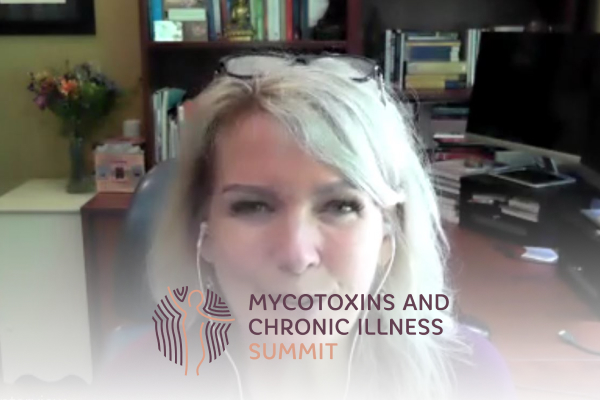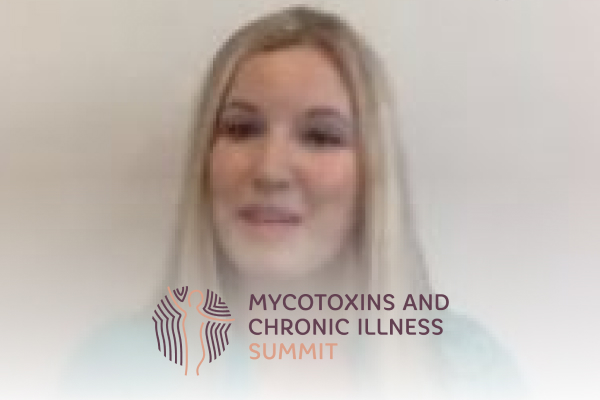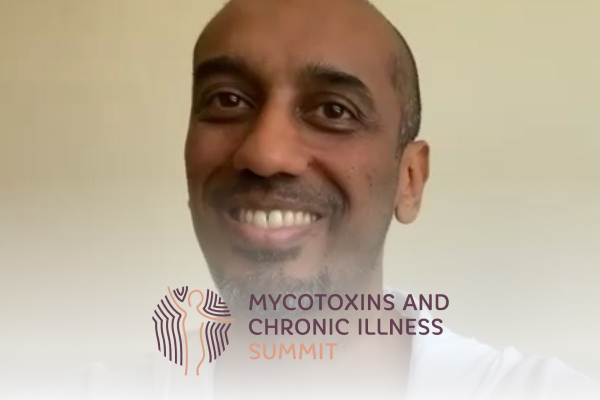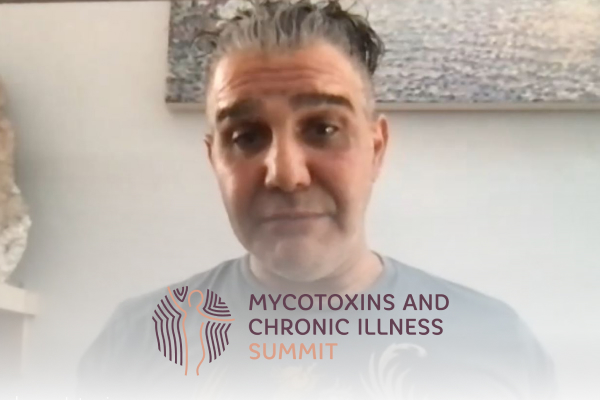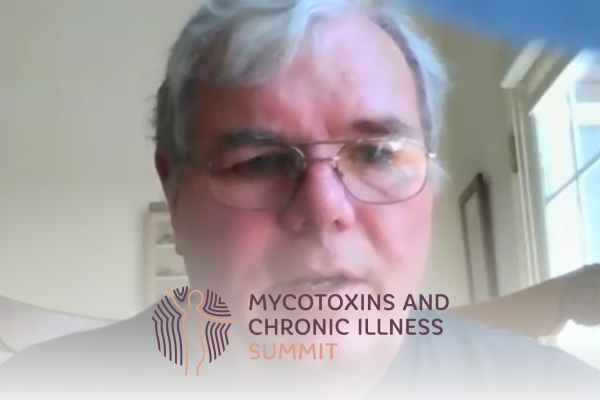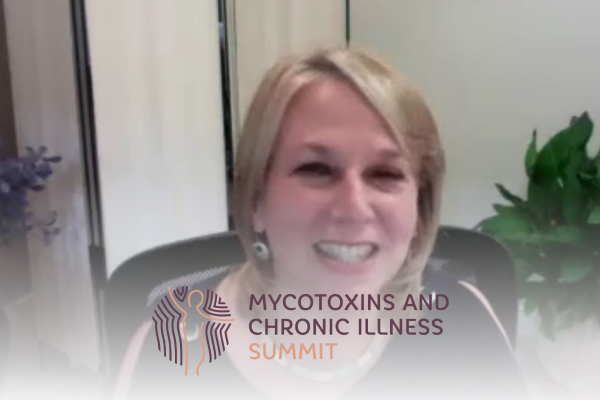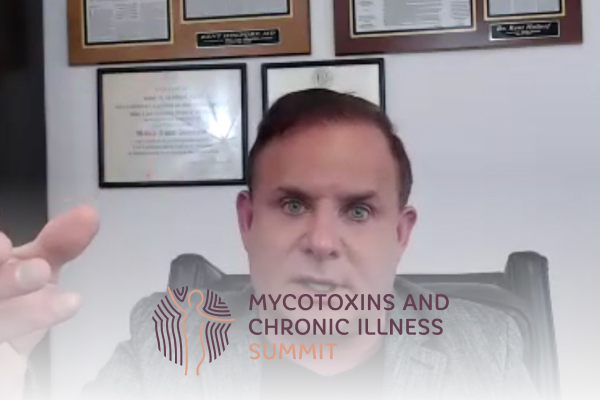Join the discussion below

Nafysa Parpia, ND has an independent practice at Gordon Medical associates, specializing in the treatment of Lyme disease and other complex chronic illnesses such as autoimmunity, mold toxicity, fibromyalgia, environmental toxicity and gastrointestinal disorders. Her patients with chronic Lyme Disease are typically those who either do not do well with antibiotics, or prefer... Read More
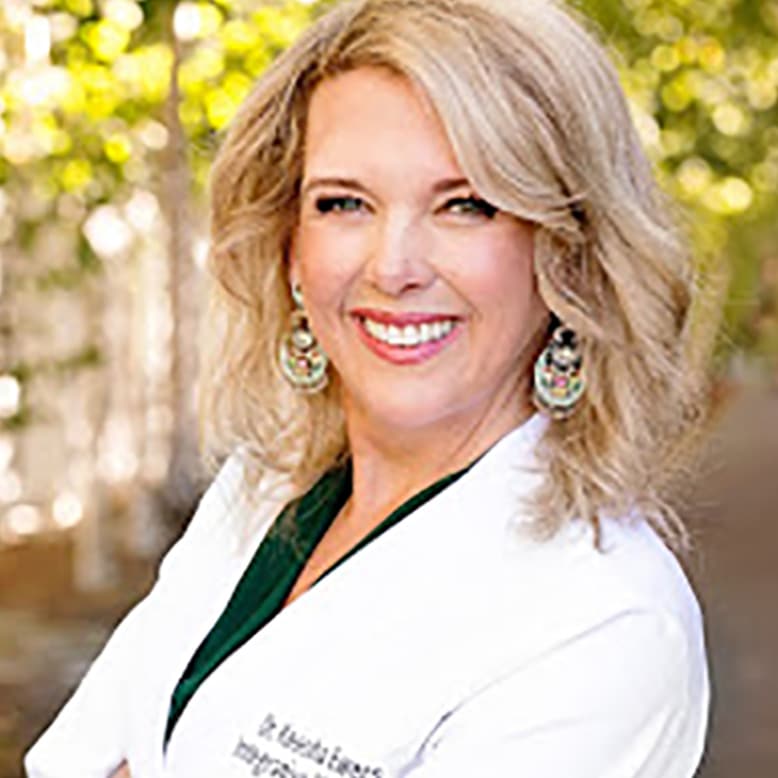
Keesha Ewers, PhD, ARNP-FNP-C, AAP, IFM-C
Dr. Keesha Ewers is an integrative medicine expert, Doctor of Sexology, Family Practice ARNP, Psychotherapist, herbalist, is board certified in functional medicine and Ayurvedic medicine, and is the founder and medical director of the Academy for Integrative Medicine Health Coach Certification Program. Dr. Keesha has been in the medical field... Read More
- Story of Dr. Keesha
- What is trauma to mold?
- PTSD
Nafysa Parpia, N.D.
Welcome to this episode of the Mycotoxin and Chronic Illness Summit. Today, I’m so excited to interview Dr. Keesha Ewers. She’s board certified in functional medicine and Ayurvedic medicine. A doctor of sexology, psychotherapist, Family Practice Advanced Registered NUrse Practitioner with a specialty in integrative medicine, a Conscious Dying Doula. A mothers, a masters of divinity student and the founder and medical director of the academy for Integrative Medicine, Health Coach Certification Program.
Dr. Keesha has been in the medical field for over 30 years. After conducting the HURT study in 2013, , she developed the HURT model for understanding how past childhood trauma impacts adult health. This led to the creation of the You Un-Broken Online Program for patients to heal their own trauma and the Mystic Medicine, deep immersion healing retreat she leads at her home on San Juan island, Washington. She’s a popular speaker, including at Harvard and from the TEDx stage and the best-selling author of solving the autoimmune puzzle.
The women’s guide to reclaiming emotional freedom and vibrant health. The quick and easy Autoimmune Paleo Cookbook: Anti-inflammatory Recipes with seven, seven ingredients or less for busy people and your libido story. A workbook for women who want to find, fix and free their sexual desire. You can listen to her Mystic Medicine radio show and find her programs at DrKeesha.com. Welcome Dr. Keesha. It’s so great to have you here today
Keesha Ewers, PhD, ARNP-FNP-C, AAP, IFM-C
Awww, it’s so nice to be here. Thank you.
Nafysa Parpia, N.D.
So I’d love to hear about your story. You start by sharing that with everybody.
Keesha Ewers, PhD, ARNP-FNP-C, AAP, IFM-C
Yeah. So it’s interesting because we’re, you know, this is the Mycotoxin Summit, right? And, and I’m gonna be talking about trauma and, and some people might not be able to make that leap to, what does trauma have to do with mold, right? But it’s the reactivity of our bodies and, and the, you know, the sensitivity that we have to our environment that comes from the inside out. And that definitely is, you know, something I’ve had to explore for myself because I was diagnosed with rheumatoid arthritis. I had a big problem with mold when I was 30. And when I was diagnosed it was interesting because it was sort of like overnight, is the way my patients describe it.
I’m all of a sudden sick. And that’s exactly how I experienced it, but we know that’s not true. That it can take anywhere from 10 to 30 years to develop a full-blown immune disease. Right? And so, you know, in my 30s, I was running marathons, raising four small children, and then one night, overnight, I gained 10 pounds over my joints in like red puffiness and it was like someone had taken the batteries out of the Energizer Bunny, I was just flattened. I got myself in to see doctor and in the process of the history she asked me if I had any family history of autoimmunity. And I said, “You know, I think my grandfather had rheumatoid arthritis and was in a wheelchair for part of his life before he died.” And in fact, I realized this year that he died at the age that I am today. And, you know, at 56 and didn’t know anything about what we’re about to talk about, like didn’t know any of it. Right?
And so he was a victim of his genetics basically. And that’s kind of what she set me up to be. When I was in that office that day, she wrote me out two prescriptions. One was for a Nonsteroidal anti-inflammatory drug and one was for methotrexate. And she said, “Here take these and when you get worse, not if, come back.” Right? “And we’ll up your meds or change your medications.” And I just, I said, “Wait, wait, wait, wait, wait. You know, like I make my own food, I’m very disciplined, I run, I’m very healthy. Like you tell me what to do. I’ll do it. What else, what else can they do besides take medications?” And she said, “I’m afraid you’ve drawn the short end of the, the genetic lottery.” You know, and it was basically closed the book, put it on the shelf, there’s nothing else to say, sorry, it’s genetic. Right?
And that is a lot of what people are hearing these days. And in fact, I’ve had patients say to me, so is there a specific genetic snip that makes it so that I’m more susceptible to mold toxicity and not clearing it, you know, is there, and, and yeah, there are. Right? That we do have things in our genetics. But one of the things I discovered in my own journey was, you know, as I was driving home, I was thinking there has to be more than methotrexate as a solution to this. And so when I got home I started looking online and in those days it was a dial up modem. I had to ask Jeeves, you know, it was like really different than it is today. And I was looking for, is there anything else in pub med? And what I found was some interesting literature about where research had been done for people that were practicing yoga that had RA.
So I went to my first yoga class the next day. And in that yoga class, the, the yoga teacher, he started talking about this word, Ayurveda, which is the sister science of yoga, 10,000 years old, you know, from India. And so I heard just enough that it got me interested that I went home and looked up Ayurveda after my yoga class. And what I discovered as I started researching it made me just like, I was riveted because it was so different from the Western Medical Model that I had been trained in. You know, of, we’re all basically the same. We can have standardized medicine that’s evidence-based and that assumes that we’re all standardized people, which we know in medicine that’s not true.
We know this, you know, and so, it’s crazy that we keep trying to aim for that when, you know, it is just like, so it just made so much sense to me. And one of the things Ayurvedic medicines at all those thousands of years ago is that autoimmune disease is undigested anger. And I, I just remember sitting back in my chair going, I am not an angry person, like I don’t understand. And as I started thinking about it, I thought, well, maybe that’s actually a problem. Maybe I don’t allow anger and so it never gets processed here so it has to go in my body. And so I started really exploring this and started learning how to meditate, and I, one day in my meditation, I saw this word autoimmune dancing in front of my third eye space and, and I was trying to bat it away as a new meditator who had, who was thinking like, you’re not allowed to have thoughts. Right? And then finally I started focusing on it and saying, autoimmune, oh, that actually means that I am attacking myself.
Oh, I’m basically killing myself. And, and when’s the first time I wanted to die because I certainly don’t right now. I have four little kids. I have a life I love, like what’s happening? And so I started going backwards in my timeline, following what I call like the golden breadcrumb trail of my memories backwards to asking like, when is there a time I wanted to die? And I found this 10 year old little girl version of myself who was being sexually abused by the vice principal of the elementary school I attended.
Nafysa Parpia, N.D.
I’m so sorry, Keesha.
Keesha Ewers, PhD, ARNP-FNP-C, AAP, IFM-C
Well, you know, today at the age of 56, I look at that event and I think it was probably something that my soul set up before I got here. Right? So that I could actually have to confront through my disease process, all the beautiful things that I’ve learned today. And so, you know, it’s like, I don’t have any sorrow about it whatsoever, but thank you. And, and, that’s the process of healing, right? I don’t ever expect someone to get from here to here that quickly. It’s been a lot, you know, a lot of processing. And so as I landed on her and I saw her, I said, oh, she wanted to die, she really did want off the planet. Her dad was out to sea in the Navy.
Her mom was like, I, I didn’t have the right words to tell my mom ’cause I, I just said, I didn’t wanna go to school, I was afraid, I would cry, I’d have headaches, but I didn’t have the right words. I didn’t even know the word sex in those days. I didn’t know the word molestation or abuse, you know, I didn’t know any of that stuff. So I didn’t know how to speak about it. And he was telling me it was because I was a bad kid. And so I thought that probably I was bad kid. That, you know, there must be some culpability in myself for it.
So I was very confused and upset, and I saw her in my meditation and I went, oh, I’ll bet that this event links to my disease process of today, 20 years later. And sure enough science tells us that that is true. And that’s really fascinating because it’s that early trauma that sets up. So I’m in my doctoral research in, in 2013, I did a study called the Healing Unresolved Trauma study. And what I was looking at was why the ACEs study that was done between 1995 and 1997 by Kaiser Permanente and the centers for disease control, it was the biggest study done of its kind, over 3,500 participants.
And I, it was looking at the capital “T” Trauma. You know, the stuff that when we hear trauma, we hear my story, we think about that. Like, oh yeah. Sexual abuse, domestic violence, psychologically emotional abuse, abandonment, neglect. We think about that when we hear the word trauma. Well, they were asking their participants before the age of 18, did you experience any of these? You know, a caregiver that was addicted to a substance or mentally ill or incarcerated or divorced or dead, like these are the big traumas, right? And so they said, anyone that you check a yes for is an ACEs score of one or two or three. And what they discovered is the higher that ACEs score, the higher your risk for all of these diseases we have in adulthood, in our culture.
All of the chronic illnesses, autoimmunity cancer, heart disease. You just, like it affects our genetic expression. It affects everything. Our microbiome and how susceptible we are to mold. Right? And so this was really interesting to me when I, when I thought, well, why does it, why does that happen? And then, so when I did the HURT study in 2013, what I looked at was, I was looking at, at brain scans and I, I looked at PET scans and fMRIs and, and I was looking at the parts of the brain that are lit up when somebody is experiencing post-traumatic stress disorder. And I was seeing that, oh, the same parts of the brain that light up with PTSD are the same ones that are required to light up when a woman has sexual desire. So I was like, wow! No wonder if you’re stressed out, you don’t have any desire, right? Because your, those parts of your brain have been hijacked.
And so I, I started thinking, Hmm, well, that’s interesting ’cause with PTSD, you get a shrinkage of your prefrontal cortex and you get a growth of your amygdala, the part of the brain that’s looking to see if you’re safe and if you can trust and you know, there are, are limbic system, right? A reptilian brain. And the shrinkage in the adult one that makes good choices and can think things through and understands rational choices and consequences, that shrinks. And I found a study that showed that the changes of the brain, the architecture of the brain, that happened with people with PTSD also happened when people say that they are overwhelmed and stressed, or if they’ve had feelings of rejection or betrayal.
Lowercase “t” traumas. That the personal stress index, if you score high on that, you’re going to have the same exact changes in your brain. So what I found fascinating about that is it’s not just capital “T” trauma that does this. Then I started searching further and what I found was, oh, so it’s actually the mind, the perceptions of the mind, right? Whether or not ,see yourself as overwhelmed stress rejected, not good enough, not pretty enough, not smart enough, not fast enough, not, whatever. Rich enough, not famous enough, whatever they are, that then sends the messenger chemicals, right? The hormones to the adrenals to say, oh, we need to actually fight, right? Or flee or freeze or faint. So our sympathetic nervous system arousal happens, which then breaks down our gut wall, which then causes us to be more susceptible to things like mold, gluten sensitivity, multiple chemicals in the environment, all of it, right? We become more sensitive.
Nafysa Parpia, N.D.
Absolutely. First of all I wanna thank you for being so intimate with us and sharing your journey with us. And, and for being such an amazing example for everybody who’s been through trauma and that is each one of us, whether it’s the capital T or the smaller t, we’ve all been there. And, and so you really bring this home to, to each one of us on the planet really. In one way or another. And, and I love that you’re bringing in the piece amount about, about the mind and the spirit and, the way we choose to respond to trauma and the way that we, that we can, I think you haven’t talked about it yet, but I think you will. About, about healing. How we, how we reach that place that we might still want to, but just don’t know how to yet, I can see you’ve done it. And I just love that you’re bringing that piece together the, the mind and how it affects the body and then going forward, how we heal.
Keesha Ewers, PhD, ARNP-FNP-C, AAP, IFM-C
Yeah. Thank you. Yeah. This is, there’s this something we all go through, whether it’s capital T or lowercase t, right? Everybody has trauma of some sort. And so the, their willingness, our culture positively reinforces the trauma of overwhelm. We are, we are positively reinforced for being overachievers, over-producing not resting, right? Not being introspective. We are not encouraged to do the introspective contemplative practices. It’s not, we don’t make money from those. Right? And so that, that piece means it’s wasted time. We always have to be on the go. And so this is a big problem. And when I did the HURT study, I came up with the HURT model that tracks, tracks what happens when we’re children.
So when we’re children, we have undeveloped prefrontal cortex also. So it’s not, so you could say that when, when we have PTSD, we’re going back to a child brain, right? When we feel like we’re overwhelmed and overstressed, and over calendared, we go back to a child brain. And so in the HURT model, what I saw was, oh, so when we have an undeveloped prefrontal cortex, which we don’t get to till 26 years old, then we first will have an event because we’re little humans trying to figure out how to be big humans, but we’re not there yet. In a world that’s governed by big humans who are telling us what’s right and what’s wrong and if we’re good enough. And so we’re going to have these events that will happen, you know, as we’re children in the lunchroom and on the playground and in sports and when we’re, we’re in our academic setting and into relationally that we don’t understand.
So maybe one day you have three friends on the playground and the next day they have turned on you and they’re not your friends, or I always give examples, like maybe you screwed up the, a spelling bee word in front of the entire class, you know, or tripped when you were running track in front of everybody. Or, you know, like all of these events when we’re children, it’s a jungle, right? Of, of moments of these kinds that, that, you know, we’re biologically wired to know that in tribal days if we were put on the outside of firelight circle, the saber-toothed tiger could eat us. And so anytime where we feel rejected from our community, it’s going to be felt as a capital “T” trauma.
So, you know, and so in the HURT model, what I, what I saw was, okay, so first we have the event then we have a feeling and the feeling can be panic or anger or sadness or hurt or pain. Pain, you know, whatever that is. And it will then be lodged into the body as a felt sense. And then that activates our sympathetic nervous system. And usually with children instead of fighting or fleeing, we freeze because we’re not powerful and autonomous when we’re children. So we just freeze. Right? And then we’re going to attach a meaning to what just happened. And it’s going to be from a very self-centered place because children are self-centric, they’re supposed to be. And so, you know, we’re very narcissistic little beings until we’re 26, until we get this full brain. Right? And so it’s going to always be about us.
That’s why, when parents get divorced the children make it about them, right? It’s, it’s always gonna be about us. And then we’re going to create a meaning, a belief to go with that meaning, and then an adaptive behavior for that belief and meaning. So the way that I usually help people understand this is we track using mind. So in fifth grade, the intercom would go off and then, the corner of the classroom and of course like, usually it was to get everybody up to say the pledge of allegiance or it was for the secretary to make announcements. And every once in a while, it was to call me to the vice principal’s office. But, it didn’t matter that that was very infrequent.
Every time the intercom would go off, I’d go into my freeze response, in the panic. Like I’d have panic, I’d start sweating. I would go into that held breath. Right? I called it the panic rabbit until I would find out what the crackling of the Intercom was about. The meaning I attached to all of this was that I have to actually be perfect to even survive. He’s saying it’s because I’m a bad kid. Right? And I was one of two kids in an all black school. So yeah, so he told me, it was ’cause I was white trash. And so, so it was something I couldn’t control. Right? And so it was like, oh, I better be perfect if I’m gonna survive this. So then the belief I put around it was that people who are, say that they’re in charge and, and are supposed to be watching after you can’t be trusted, because that was true for that 10 year old little girl and that person. Right? But, so it took me a lot of healing to be able to go through TSA without my heart beating too much. In the airport.
And then the, the behavior that I used as an adaptive behavior response was perfectionism. And so if you can, you know, and by the time I was diagnosed with RA, I was really good at perfectionism. I drove myself, I was so hard on myself and, you know, of course I drove myself into the ground with it and got a beautiful little autoimmune disease as my reward for it. Right? So the healing aspect happens by learning how to track that. Not necessarily going into like all the places where you have been hurt in your life, but starting to see themes of what triggers you? Like when you have a feeling of hurt or fear or anxiety or anger, frustration, get really curious about it. Ask yourself like, how old do I feel right now?
What’s the belief I’m, I’m having right now? What’s the meaning I’m attaching to this moment with whatever this is outside of me, that is, that’s pushed my button? And then look and see what’s the behavior that you want to engage in. That your child mind, very wisely, right? The wise mind of your child created this beautiful adaptation to that moment. But you may not need that anymore. Right? An upset four-year-old governing what your 45 year old is doing right now. Right?And so in the HURT model there, there’s a bifurcation from there with this initial HURT loop, then you have on one side of the model where it says, if you’re not willing to self confront and you keep going into the same button pushing and the same looping, it’s called maladaptive memory processing, then you’re gonna be judgmental. You’re gonna ruminate on your hurts, your, you know, you’re going to stay in that soup of feeling and it will eventually make you sick.
You know, you’ll have a lot of automatic negative thoughts, how come that person does it this way? I can’t believe, you know, and so, you’re, you’re just gonna go into that automatic negative thought judgment looping and it’s, it’s really gonna cause resentment, which makes us get sick over time. And then on the right hand side of the model is another, it’s called an adaptive memory processing loop. And that’s where you have the willingness and the curiosity to engage in self-confrontation and inquiry.
Like, huh, that’s interesting. I’ve been thinking that thought my whole life, is it helping me? Right? Is it really about somebody outside of me or is it the way that I’m perceiving? And so it starts getting you into this willingness to get engaged with your small child self and to heal that little one and what their perceptions were repairing that. Right? And, you know, you can say, oh yeah, that was then, but it’s not now anymore. So for example, like in, I would get fairly confrontational if I, but I was not joking when I said at the airport with TSA, if I would see somebody being, I remember watching somebody at TSA agent take a whole bunch of stuff out of someone’s bag and then laughing at them and ridiculing them and I got really angry. I was very triggered by it. And remember, I mean, I just remember like yelling up to that person and saying, that’s disrespectful.
You know, what if this were your mother and just really calling them out, you know, and really mad and advocating for that person that was having this happen. And, and it was as if I were standing next to my ten-year-old self, right? And I didn’t have awareness of that. So when I, when I healed it, now I can do that a lot more skill and not get so angry. I would probably still do the same thing but I would do it with a lot more calm regulation, right? Inside my system. Or I wouldn’t go into a fight or fight on behalf of another person. I would go into an advocacy on their behalf that didn’t have a lot of like anger underneath it.
Nafysa Parpia, N.D.
I love that you’re, that you’re bringing, that you bring up the now. Who we are in the moment now as opposed to who we were in the past and, and reliving it. ‘Cause a lot of times we do when we haven’t, when we haven’t understood the pattern. And I tell my patients and my daughter also that our thought patterns are like, are like raindrops. When you, when you look at the window and, and rain falls down the window, there’s a pattern that a raindrop makes and then the rest of the raindrops come and they follow the same pattern and our, our thought processes are like that. And, and they’re based on our previous events that were difficult, whether they’re in our childhood or even in our adulthood. Definitely in our childhood I would say that that, that they, these, these patterns carry out in our behaviors and our thoughts, in our emotional, spiritual engagement.
In the world, how we hold the world. And, to understand that what we’ve, what we’ve experienced in the past, it can be our, our tool, it can be our gift. As opposed to being yoked with the trauma. So to find the appropriate ways to heal, where we can unyoke the trauma from the gift and, and, and be able to walk the world using those tools. And I love that you bring up the way that you, that you felt at the airport. And how you would, you would have the same care for that person, where you’d be able to approach the situation with less stress in your body. And I believe that our, one of our ultimate reasons for being here is to experience joy. To guard our joy and to guard the joy of, of those around us. That it’s so easy to fall back into a pattern of stress. So it’s so important to understand what the patterning is without necessarily hooking it into the past experience so, thank you.
Keesha Ewers, PhD, ARNP-FNP-C, AAP, IFM-C
There’s a skillfulness that comes. I mean a skill that is born from your adaptive behavior, right? Oftentimes, and maybe it’s eating Oreo cookies or, you know, shopping a lot or watching Netflix for hours on end as a way of self- soothing and self-medicating or drinking, or, you know, but often times there are behaviors that are put in place like my perfectionism, right? I have, nobody wants a medical provider that’s anything less than perfectionistic. And so I can turn it on when I need it and then I can let it go when it comes to parenting and being a spouse, you know, and, and a friend, like nobody wants that in those arenas. And so it’s having the skill to be able to really feel gratitude for all the beautiful gifts that, that, that provided that adaptive behavior. And then to be able to not have it run you.
So, you know, like I love that I’ll jump, when I was in India one time when there was a riot and I saw this policeman pull a woman out of Rick Shaw, you know, and, and by the hair and she was pregnant and he had a stick up and he was about to hit her and I just ran and I grabbed it and I got it right in the middle. And I was screaming at him at the top of my lungs, you know, I scared him. And, and I just remember thinking like, oh, the ability to advocate for another person is really a beautiful gift that comes from that. But, right? It’s the energy that it’s motivated from that can destroy you, or it can actually be in a beautiful compassionate space. And so it’s like, oh, how do I balance those two? How do I keep the gift and not have it destroy me at the same time? Right?
Nafysa Parpia, N.D.
Exactly. And it’s knowing that we can, we can be the, the ones who are running our emotions as opposed to our emotions running us. So coming to the place where we’re the master of ourselves. And I think that we’re not taught that.
Keesha Ewers, PhD, ARNP-FNP-C, AAP, IFM-C
No we’re not.
Nafysa Parpia, N.D.
We never seek it out from special places and special people in the world. Yeah. Otherwise–
Keesha Ewers, PhD, ARNP-FNP-C, AAP, IFM-C
It’s very true.
Nafysa Parpia, N.D.
We are, we are run by our emotions unless we learn how not to be. Yeah. Yeah. So tell us more about this and chronic illness mold.
Keesha Ewers, PhD, ARNP-FNP-C, AAP, IFM-C
Yeah. So that sensitivity, I always say a hypervigilant mind where you’re always on and you’re looking to see if you’re safe and you’re okay will create a hypervigilant immune system. And so, you know, leaky boundaries leads to leaky gut and that inability to manage your emotions and your thoughts can lead to the breakdown of the barriers that are supposed to be protective in your body. And then also influence how your genetics are expressed. Whether or not you can detox the toxins you’re exposed to, it doesn’t really matter what your genetics are, honestly. You know, like I said, a lot of my patients wanna land on the snip that’s responsible for all of their ills. And I’m like, well, no, you know.
That’s the one that got expressed as a result of, and people will say, so you’re telling me it’s my fault. And I say, well, no, no, no, this is out beyond like, Rumi’s poem, “Out beyond the field of wrongdoing and rightdoing.” Right? This is a place where there’s no rightdoing and wrongdoing. It’s just natural consequences to actions. Like for every thought it’s going to either be nourishing or it’s going to be destructive. And, and that’ll be on a spectrum. And so if, if you have a lot of thoughts that are, have a place of, oh, I’m not like this food, you know we, in functional medicine we often activate an eating disorder and people call it orthorexia or make them afraid of their food. Right?
Nafysa Parpia, N.D.
Right.
Keesha Ewers, PhD, ARNP-FNP-C, AAP, IFM-C
And now we have everybody afraid of mold. And one of the things that I’ll say is, yeah, it can definitely be the trigger you know, like I, I think about four corners of a puzzle and each of us has a unique puzzle. And the four corners of that puzzle when we’re trying to solve your puzzle are your genetics, which are gonna be different from anyone else’s. Your digestive health and how sensitive you are to your foods and to the chemical, chemicals in the environment and that leads to our toxic burden load. And so we have Lyme and we have Epstein-Barr and we have COVID, we have all these different kinds of toxins, but then we also have the mental and emotional ones too, right? Our thoughts. And so then that’s all the fourth corner piece of the puzzle, I just went through three of them.
The fourth corner piece of the puzzle is past trauma. And, you know, we, I showed you how we set up our nervous system reactivity pathways from very young. And so if those nervous system reactivity pathways are creating a breakdown in the protective barriers in your whole system, then of course mold is gonna be one of the toxic burdens of, of the third puzzle piece. And it’s, there’s never one thing that makes you sick. And so, you know, mold will be one of the things on the scale that just like tipped your, your boat over, right? There, there are a number of things there before mold can be a problem.
We, we had to do $80,000 of mold remediation about four years ago in this house. And, and when, it was just because we had to replace our furnace and when they moved the furnace away from the wall and took out the sheet rock, there was just black mold everywhere, you know, going up three stories in every bathroom ’cause the top bathroom was the one with the problem. And, you know, I thought that’s so interesting ’cause I have a history of RA. I was able to reverse it in six months back when I was my 30s, it’s never come back again. And here I’ve lived for probably several years with all this mold in this house with no reactivity, like no problem, you know, but in my 30s had I had this problem, it would have put me under. And so it’s, it’s like, can you build a cushion in your emotional world, you know, and downregulate your reactivity of your mind? And then that downregulates the reactivity of your immune system, your genetic expression. Right? All, all of that. So it’s, it’s really important to address all of those pieces at the same time.
Nafysa Parpia, N.D.
I think it’s so important to, a lot of times people will come in to my office and not realize that that’s a big piece. What made me sick? Was it the mold? Was it the Lyme?
Keesha Ewers, PhD, ARNP-FNP-C, AAP, IFM-C
Right?
Nafysa Parpia, N.D.
The focus on the physical pieces until they’re comfortable enough to talk about
Keesha Ewers, PhD, ARNP-FNP-C, AAP, IFM-C
Yeah.
Nafysa Parpia, N.D.
The emotional pieces that the trauma is in. And then when we talk more, they come to understand that the soup that it all is, that it’s not, it’s not a salad like all those, the tomato, there was just the trauma or there was just the mold. All these, all these pieces come together and create a soup of, of toxins and the outside definitely is a reflection of the inside. So what’s happening–
Keesha Ewers, PhD, ARNP-FNP-C, AAP, IFM-C
Exactly.
Nafysa Parpia, N.D.
Yeah.
Keesha Ewers, PhD, ARNP-FNP-C, AAP, IFM-C
Yeah. And it, it, you know, healing all of it at the same time, slowly, slowly layer upon layer. I think about it as a spiral, you know, is what gets us to final resilience, right? Where, where we have the resilience to navigate big stresses that are emotional and mental and big traumas that are physical. And, you know, like the inundation of the, of the chemicals that we’re exposed to. Right? If we’re supporting our system in ways that allows for property toxification, then it’s not gonna be as big of a deal. So we’re, we’re having to just, like check in with the body, right? With compassion and curiosity.
So how are you doing? I see that there are a lot of mycotoxins built up in here, so why don’t we? Right? And then I always tell my patients, like we’re not going in with all guns ablazing right off the bat. Right? Because we can make you sicker and so, yeah. So we had to actually, and I have so many patients that come to me that are really angry because they’ve spent thousands of dollars on different protocols and functional medicine testing and, and their autoimmune disease is not reversed, and, and they’re not better. And you know, they’ll, they’ll hear me talk about trauma and they go, oh, I haven’t done that part. I, I haven’t done that part yet. And, you know, I’m like, yeah, you kind of have to.
Nafysa Parpia, N.D.
Yeah, yeah. I think that’s, I think that’s one of the most important pieces of the healing.
Keesha Ewers, PhD, ARNP-FNP-C, AAP, IFM-C
Yeah.
Nafysa Parpia, N.D.
So tell me about, about how you approach this piece one-on-one with your patients?
Keesha Ewers, PhD, ARNP-FNP-C, AAP, IFM-C
Yeah. So it just depends on where they’re at in their own process. A lot of people who’ve done a lot of therapy, like they’ll say, oh yeah, you know I’ve, I had this happen to me, but I’ve done so much work around it already, you know, but they still have autoimmunity, you know, and so I’ll work with them from the place that they got to in their therapeutic process, we’ll start there and move forward. But I do something, I call it healing trauma through the Chakra System where there’s a, it’s really important to establish a foundation of a felt sense of safety first. Right? And so I help people establish that within themselves, finding a calm safe place that they can go to within their own systems and, and practicing how to regulate that.
And then we start working on the belief systems that they, in the beliefs they made up as children in response to different relationships in their lives and then how they built their ego and the voices of that ego and how they’re, what those behaviors are. And we just, you can’t start at behavior like if, if you have an addiction to Oreo cookies, you can’t just say, I’m gonna stop eating Oreo cookies. You have to really get underneath like, how old was the one that decided Oreo cookies were the solution, right? And what was going on for that one and what was the belief that they created and then heal all of that. So we do a lot of attachment healing. So, you know, working with attachment issues and, and internal family systems and, it just depends on like again, where, where people are at with their process, a lot of energy work and.
Nafysa Parpia, N.D.
Right. I take a very similar approach as well. A lot of energy work. And back in the days when I can go the office more, a lot, a lot of Craniosacral therapy, people would talk a lot, so we can get them into a place of safety in understanding their childhood. I call them their childhood decisions. The decisions they made as a child. That this is what I’ll do to make myself safe. Example the Oreo cookies.
Keesha Ewers, PhD, ARNP-FNP-C, AAP, IFM-C
Right.
Nafysa Parpia, N.D.
And, and how that serving them now still, or maybe not serving them now. And then of course we get into the, the physical and biochemical pieces at the same time and–
Keesha Ewers, PhD, ARNP-FNP-C, AAP, IFM-C
Exactly.
Nafysa Parpia, N.D.
Yeah. I love that you were taking a holistic approach as well.
Keesha Ewers, PhD, ARNP-FNP-C, AAP, IFM-C
Yes.
Nafysa Parpia, N.D.
It’s so important for our patients.
Keesha Ewers, PhD, ARNP-FNP-C, AAP, IFM-C
It is it’s essential.
Nafysa Parpia, N.D.
Yes. Yes. Well, thank you so much.
Keesha Ewers, PhD, ARNP-FNP-C, AAP, IFM-C
It was my pleasure. I really appreciate, you know, that you’re doing this. I know how much work these summits are, but the information that people can get from them is so very important so thank you so much.
Nafysa Parpia, N.D.
Thank you. Thank you for all your summits as well. They are always wonderful.
Downloads

